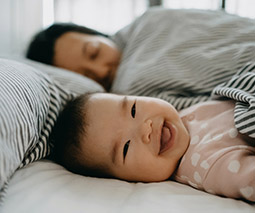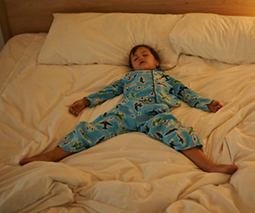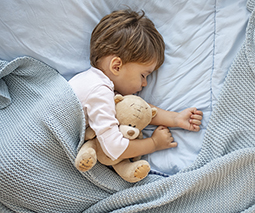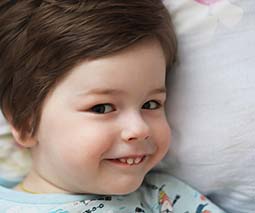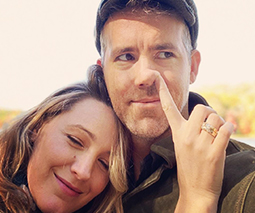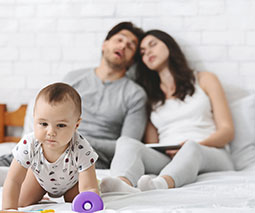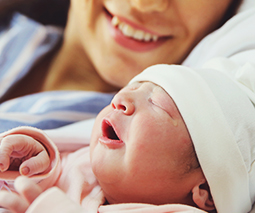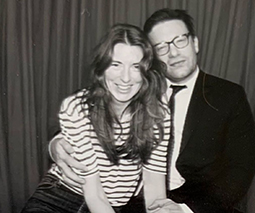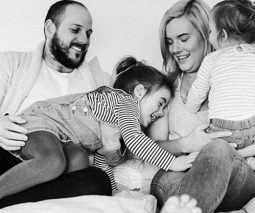Bedtime boomerangs: How to manage toddlers who keep getting up after bedtime
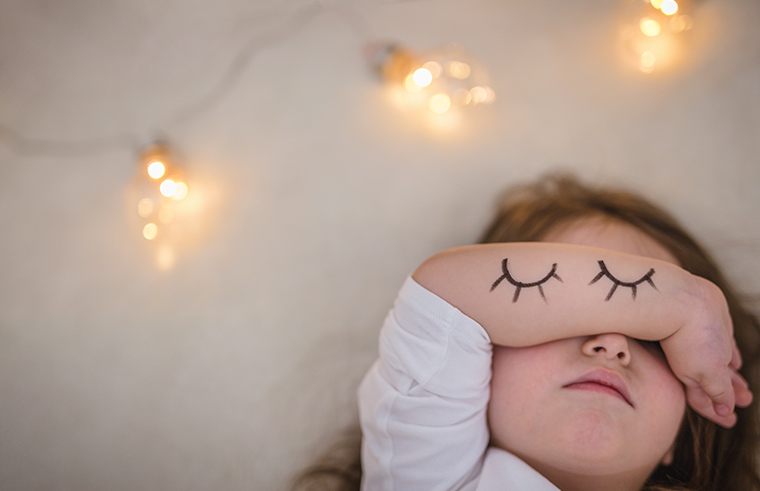
Perhaps you’ve been here? Finally relaxing on the couch after your child’s bedtime, only to have them peek around the corner needing just one more glass of water, one more cuddle, one more bedtime story?
It sounds sweet but when this happens to tired parents night after night, the cute can wear pretty thin.
We spoke to Dr Kate Highfield, an expert in early learning with Early Childhood Australia and a mother to a toddler about how to keep those pop-ups after bedtime to a minimum.
Listen to Dr Kate Highfield on Feed Play Love:
Bedtime shenanigans
Kate says this behaviour in kids has much in common with grown-up behaviour, despite appearances.
What your child’s brain is doing at this time of the day, like many of us, is that it’s starting to wind down and it’s at this moment that their brain seems to start firing as they think about what’s happened in the day. In a nutshell, they’re reflecting.
“For many young children, their brain is actually engaged in a lot of brain activity at that time of night,” Kate explains. “Sometimes that comes off as procrastination —I don’t want to go to bed.”
Kate advises parents to acknowledge and then return them to bed.
“Whatever your routine is, you need to just follow your routine and and really put in place that sleep structure.”
“I have to say, I’m the first to admit I’m not the best at this,” Kate admits. “Learning to fall asleep takes practice, and you have to commit to it and follow that routine.”
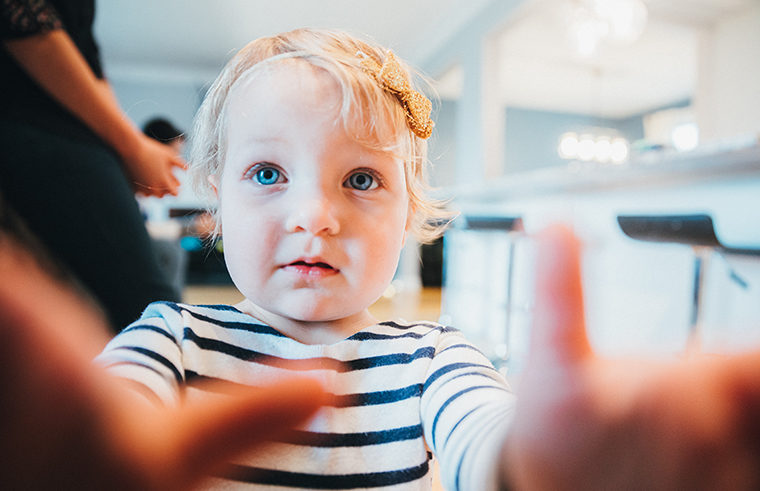
A clear bedtime routine is vital
Kate shared her daughter’s toddler bedtime routine, to give other parents an idea of what could work.
“We have a very set bedtime routine that involves having a bath, cleaning our teeth, reading some stories and going to bed,” she explains.
“There are no screens at bedtime other than music playing, which, yes, involves a screen because we use an app, but the screen is turned over and my daughter doesn’t see the screen because there’s lots of research about limiting screen time for that hour and a half before bed.”
“For my daughter, part of [her] routine is having her comfort toy and having a drink full. And she does that even from the age of two before she gets into bed. She gets her pillow, her comfort toy, her [water]. And then we go to bed.”
Label and redirect
Kate says this clear routine gives you something to shift back to when ‘correcting’ this behaviour.
“Every family has a different sleep routine. And following that is what’s going to be important for you.”
Labelling the behaviour and then steering your child back on course for bedtime is the best approach each time they hop out of bed.
“If your child is using a procrastination technique, then we acknowledge it. We label it and say, ‘I think you’re having trouble going to sleep. So let’s try this’ and then redirect back to bed or back to the routine.”
Acknowledge, label and redirect, mums and dads!
